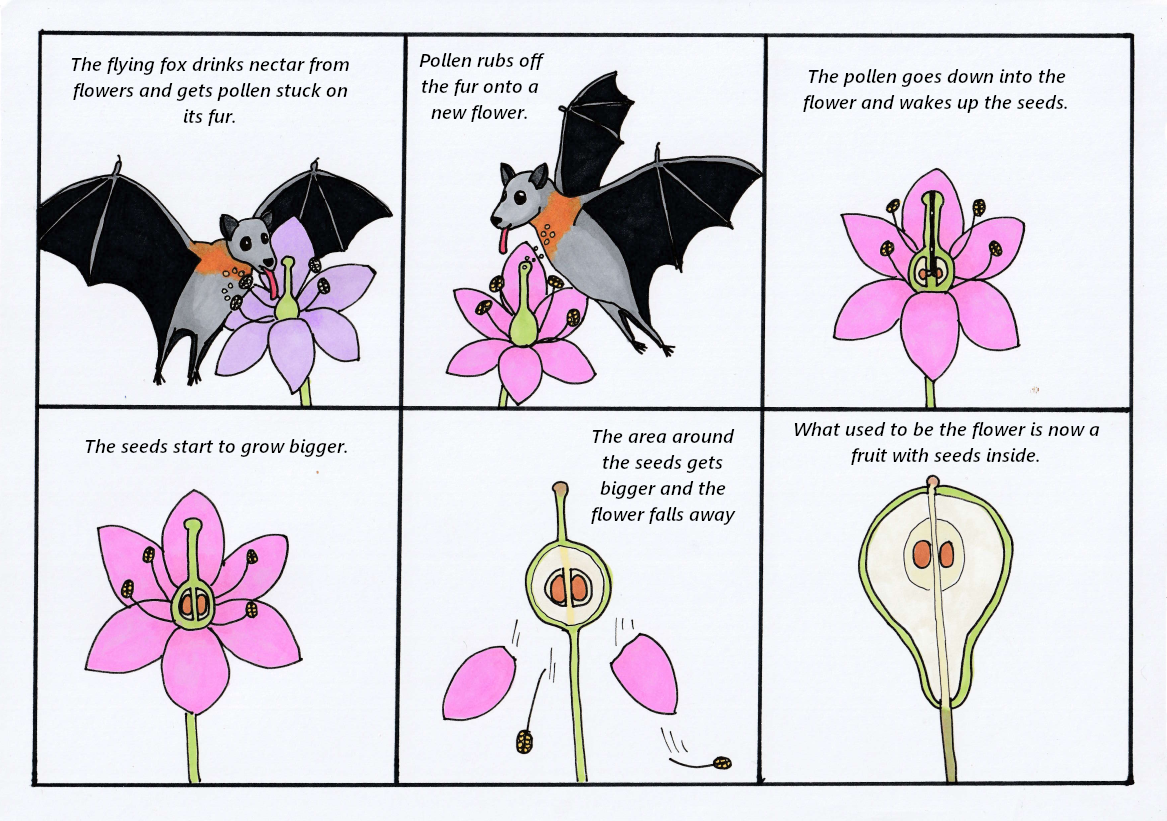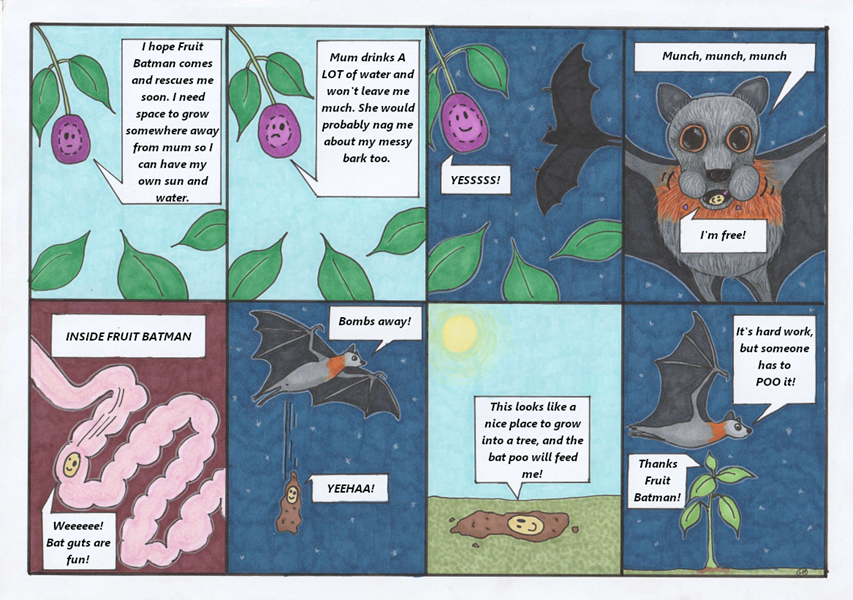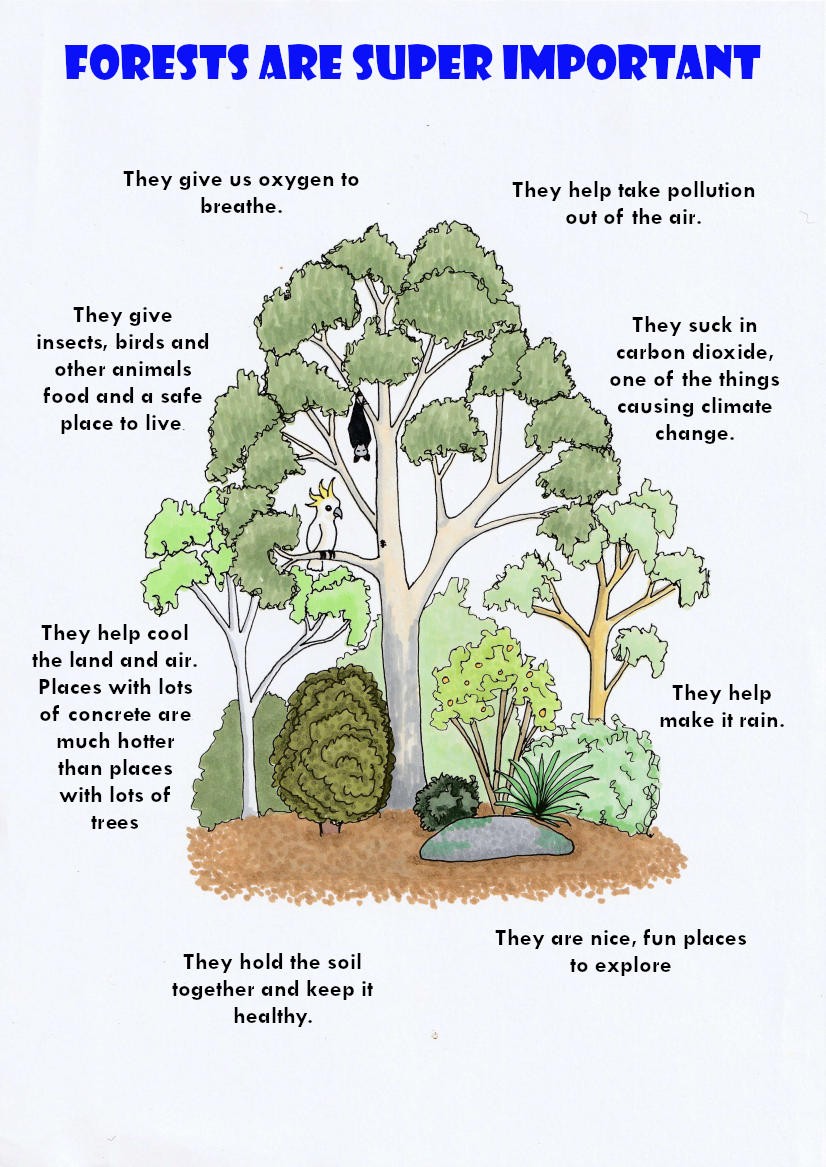We know what you’re thinking. How on earth can a bat that is a bit smaller than a 30cm ruler help make a forest full of big trees?
Well, they break their mission into two parts. The first part of the mission is to help plants make seeds by
pollinating their flowers. This is how it works…
 Pollination. Credits: Laura Hill 2021.
Pollination. Credits: Laura Hill 2021.
They don’t just help make seeds, they also help them go places. That’s the second part of their mission and it is called seed dispersal.
 Seed dispersal. Credits: Laura Hill 2021.
Seed dispersal. Credits: Laura Hill 2021.
Trees need flying foxes and flying foxes need trees. Trees give flying foxes food and a place to live. Flying foxes help trees make seeds and spread them so they can become forests.
But why should WE care about trees and forests?

Why should we care about forests? Credits: Laura Hill 2021.